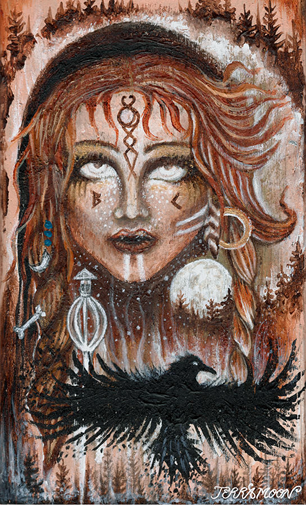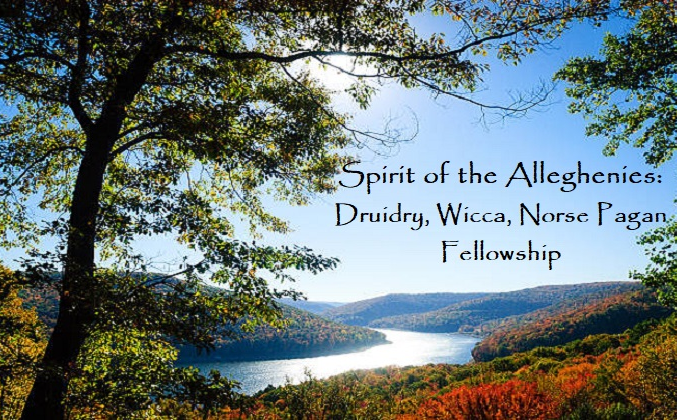
Norse Symbolism
In Norse mythology and culture, ravens played a significant role, serving as symbols of intelligence, wisdom, power, prophecy, and as messengers of the gods. Despite their association with death, ravens were seen as powerful protectors and guardians. It was believed that if a raven perched on a person’s home or property, that person would be under the protection of Odin himself.
Ravens as Odin’s Companions:
Huginn and Muninn’s names mean “thought” and “memory”, respectively, highlighting the importance of their roles as Odin’s advisors to the events of Midgard and the other realms. Odin bestowed the gift of speech to his companions, according to the Icelandic Ynglinga Saga (and other sources). Huginn and Muninn would fly out in the morning, their eyes and ears missing nothing and return in the evening, reporting all they had seen and heard to Odin. These ravens were revered for their intelligence and wisdom. Snorri Sturluson, a well-respected twelfth to thirteenth Century Icelandic historian and writer, referred to them in Gylfaginning, the first section of Prose Edda:
“Huginn and Muginn,
Fly everyday
Over the great Earth
I fear for Huginn
That he may not return
Yet more am I anxious for Muninn”
The concern that the ravens may not safely return to Odin shows in the above lines reflects a high value on which Odin, also referred to as the Raven God, placed upon them.

Ravens in battlefields and mythology: Ravens were also associated with death and war in Norse mythology, often seen on battlefields, feasting on corpses of fallen warriors. This association with death made them a symbol of power and fearlessness. In addition, ravens were often depicted as messengers of the gods, serving as the link between the mortal world and the realm of the gods. The raven banner, known as hrafnsmerki, was a flag flown by Scandinavian Jarls and other chieftains in the 9th-11th centuries as they invaded others lands or went to battle as a representation of their chiefdom.
Practical uses of ravens: In addition to their mythological significance, ravens had a practical role in Norse society. They were kept as pets and used form hunting and scavenging, particularly in rural areas. Their intelligence and ability to problem-solve made them valuable assets in hunting and gathering.

Raven Names: “Hrafn” means raven in Icelandic. Raven names have been popular for both men and women. Eighteen raven names appear on the Icelandic Naming Committee’s list, some used more often than others. Examples include:
Male: Hrafn, Hrafnar, Hrafnbergur
Female: Hrafnheidur, Hrafnborg, Hrafnhildur, Hrafndis
Hrafndis combines raven with “dis” which has quite elevated meanings, including a Goddess or wise-woman or Volva. The blending of the two words presumably shows how well-regarded ravens were when the name originated.
Celtic Symbolism
As the bird sacred to the Goddess Morrigan (the death aspect of the Goddess who was frequently seen at battlefields), ravens speak to the dark and difficult aspects of life and to the mysteries surrounding death and the afterlife. In darkness there is the seed of light, and in light the seed of dark. Ravens bring us closer to the truth of our existence, that which transcends the physical / temporal realities of life on Earth and peers into the Otherworld, where deep healing occurs through the resolution of opposites. Raven teaches us to integrate our pain that we may know pleasure; to reconcile conflicts so we may know peace; to accept and welcome the unconscious contents of our Shadow so that we are true sons and daughters of light. Through the Morrigan, ravens teach us that death is the twin of rebirth, and transformation leads to the deepest healing.
Ravens are the Bird of Prophecy. They travel across the realms and through the darkest regions of the Underworld to bring back visions and oracular guidance. They are the totemic birds of Ovates and Shamans. They see beyond the veil of death and know the future and the past. Within their black eyes lie the secrets of existence. Due to their ability to speak, they are portrayed in folk stories around the world as a guide for souls traveling between the Earthly and Spirit realms. The Welsh Chief Bard, Taliesin, said, “I have fled in the shape of a raven of poetic speech.”

Ravens are sacred to the Welsh hero-god Bran the Blessed (Bendigeidfran), who fought a war with the Irish to avenge the honor of his sister Branwen (White Raven). Slain in battle, Bran’s head was brought back to Britain and buried at White Hill in London, generally identified as “Tower Hill,” as the Tower of London now stands there. Bran’s head uttered a series of prophecies, the most famous of which stated that Britain would never succumb to any enemy so long as ravens lived at White Hill. There is an interesting anecdote about the ravens of the Tower of London during the Second World War. As the German Luftwaffe bombed London, all but three of the tower ravens fled or died from the concussive explosions. Winston Churchill, inducted as a druid in the Ancient Order of Druids in 1908, knew well the importance of keeping ravens at the tower. The Prophecy of Bran the Blessed, whose totemic bird was the raven, stated that Britain (Albion) could not be conquered by any enemy so long as ravens remained at White Hill, where the head of Bran the Blessed was laid to rest. As soon as Churchill heard about the flight of the ravens, he sent for ravens to be brought to the tower to bolster their numbers. As the prophecy was unbroken, London survived the Blitz and England was never invaded by the Germans. To this day, the tower ravens are enlisted members of Her Majesties Armed Forces.
In nature, wolves and ravens share a symbiotic relationship. Ravens will alert wolves when a large prey animal or a herd is nearby. The wolves answer the raven’s call, coming to hunt the beast(s), and then allowing the ravens to share the meal with their pack. Ravens are also known to play tag with wolves, pecking or grabbing at a wolf’s ears until it lunges at them, and leaping away at the last second. Ravens have adopted individual wolves, traveling with them wherever they go, and even leaving with them if they abandon the pack.



